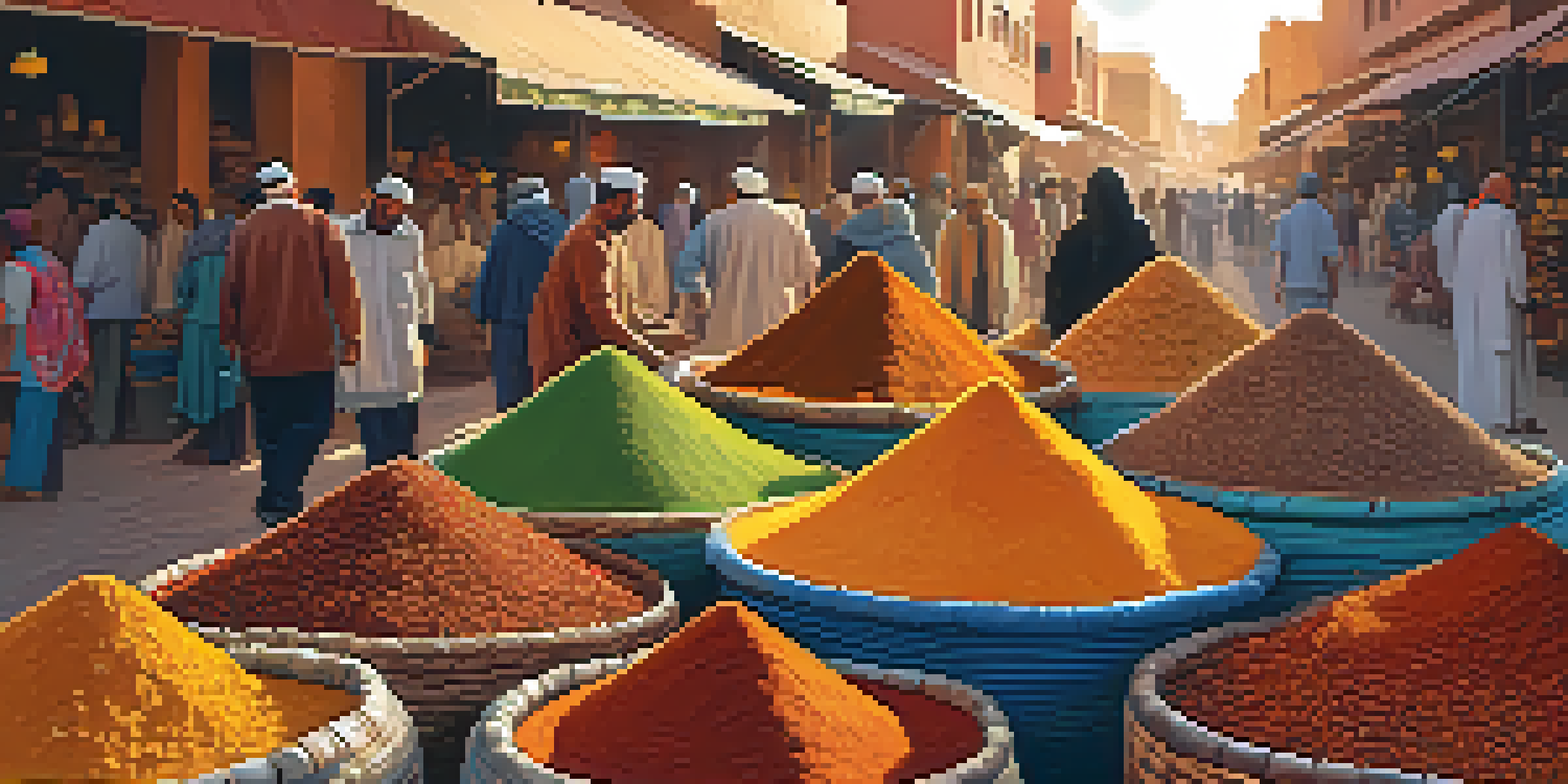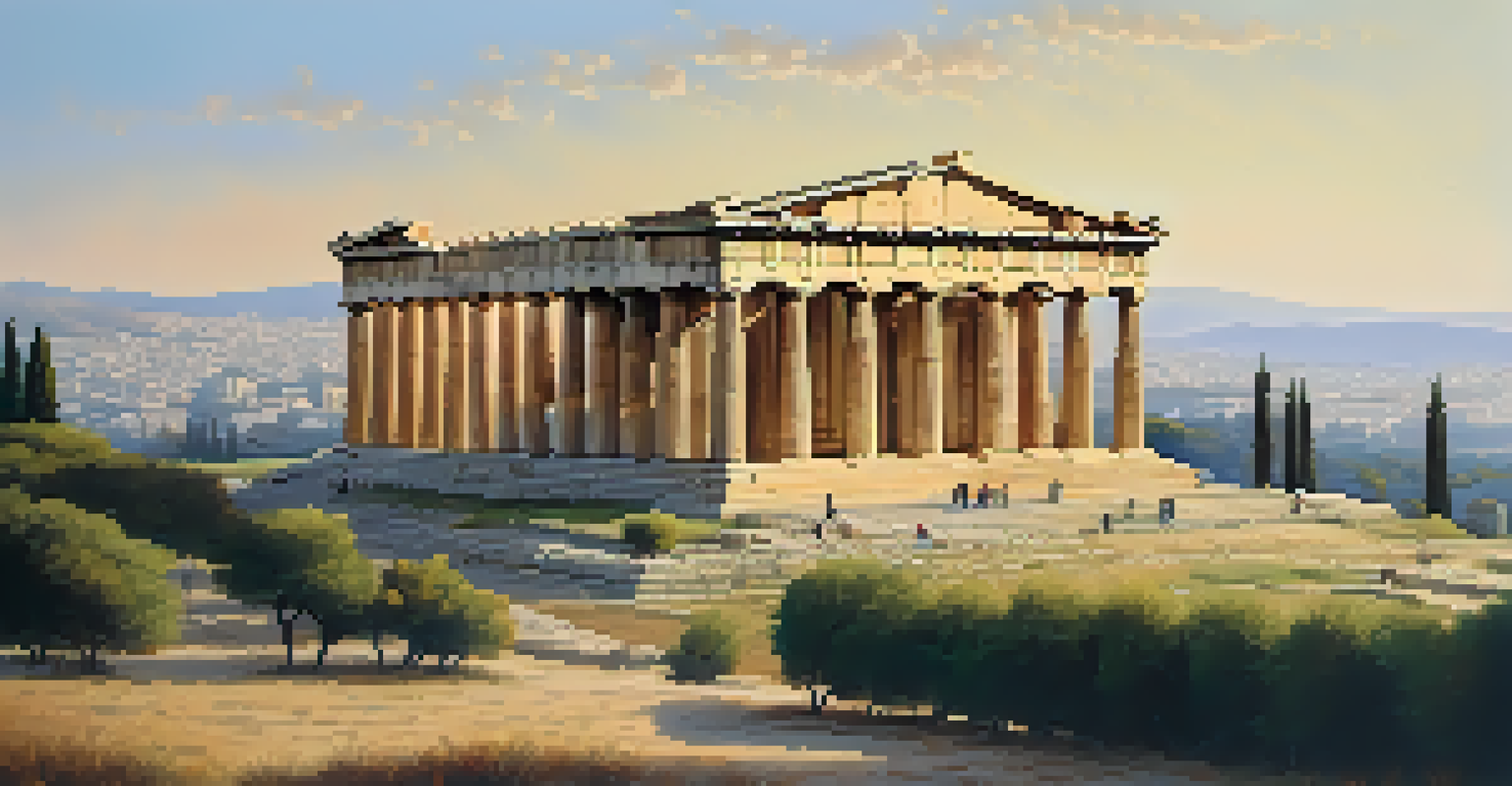Travel Photography: How to Tell a Story Through Images

Understanding the Essence of Travel Photography
Travel photography is more than just snapping pictures of beautiful landscapes; it's about capturing the essence of a place and its people. Each photo should evoke emotions and tell a story that connects the viewer to the moment. Think about how a single image can transport someone to a bustling market or a serene beach at sunset.
Photography is the story I fail to put into words.
To achieve this, consider what makes a location unique. Is it the vibrant colors of the street art, the laughter of children playing, or perhaps the solemnity of ancient ruins? By focusing on these elements, you can create a visual narrative that resonates with viewers and invites them to explore the culture of the place.
Ultimately, great travel photography is about perspective. It encourages us to see the world through different lenses—literally and figuratively—and appreciate the diverse experiences that each destination offers.
Choosing the Right Equipment for Your Journey
When it comes to travel photography, having the right gear can significantly enhance your ability to tell a story. While you don't need to invest in the most expensive camera, understanding your equipment is key. A compact camera or even your smartphone can capture stunning images when used thoughtfully.

Consider the types of shots you want to take: landscapes, portraits, or street scenes. This will guide your choice in lenses and accessories. For instance, a wide-angle lens is fantastic for sweeping vistas, while a portrait lens can beautifully capture the intricate details of a local's features.
Capture Authenticity in Photography
Authentic moments convey powerful emotions and stories that resonate with viewers long after the trip.
Remember, the best camera is the one you have with you. Focus on learning how to maximize your current gear instead of getting caught up in the latest trends. Practice makes perfect, and the more comfortable you are with your equipment, the more creative you can be.
Capturing Authentic Moments and Emotions
Authenticity is at the heart of compelling travel photography. The best images often capture genuine moments—those fleeting instances that convey emotion and humanity. Whether it's a child's smile or an elder's pensive gaze, these moments can tell powerful stories that resonate long after the trip is over.
A good photograph is knowing where to stand.
To capture these authentic moments, patience is key. Spend time observing your surroundings and wait for the right moment to click the shutter. Sometimes, the most beautiful images come from simply being present and allowing the scene to unfold naturally.
Engaging with the locals can also lead to incredible photographic opportunities. Ask for permission to take their photograph and share a bit of their story, which can add depth to your images. This connection can be the difference between a standard photo and a captivating story.
Composing Your Shots for Maximum Impact
Composition plays a vital role in how effectively your travel photographs tell a story. The rule of thirds is a popular guideline, where you divide your frame into a grid and position your subject along these lines or their intersections. This technique creates balance and draws the viewer's eye into the image.
Don't be afraid to experiment with different angles and perspectives. Sometimes, a shot taken from a low angle or a unique vantage point can completely transform the narrative of your photograph. For example, capturing a landmark from below can emphasize its grandeur and make the viewer feel small in comparison.
Composition Enhances Visual Stories
Effective composition techniques, like the rule of thirds and leading lines, can significantly impact how your photographs convey their narratives.
Additionally, consider leading lines and framing elements to guide the viewer's gaze through the image. Whether it's a winding path, a river, or the architecture of a building, these compositional tools can help create a deeper connection to the subject and enhance the story you want to tell.
Utilizing Light to Set the Mood
Light is one of the most powerful tools in photography, capable of setting the mood and enhancing the story behind your images. Early mornings and late afternoons, often referred to as the 'golden hours,' provide soft, diffused light that can make your photos glow. This warm light adds a magical quality, making even the simplest scenes captivating.
On the other hand, harsh midday sunlight can create strong shadows and contrast, which can be used creatively to evoke drama in your photos. Experimenting with different times of day and weather conditions can lead to unexpected results that add depth to your storytelling.
Don't shy away from challenging lighting situations, either. Night photography can ignite a sense of wonder, capturing city lights or the starry sky. With the right settings and a bit of practice, you can create stunning images that tell a different story altogether.
Editing: Enhancing Your Story Without Overdoing It
Post-processing is an essential part of travel photography, allowing you to enhance your images and bring your vision to life. However, it's crucial to strike a balance between enhancement and authenticity. The goal is to make your photos shine while still retaining the true essence of the moment.
Use editing software to adjust exposure, contrast, and color balance, but avoid excessive filters or edits that can distort reality. A well-edited photo should enhance the story, not overshadow it. Think of editing as a way to polish a gem rather than change its fundamental nature.
Light Sets the Mood for Images
Utilizing different lighting conditions, such as golden hours or nighttime, can dramatically enhance the mood and storytelling of your travel photos.
Remember, every adjustment you make should serve a purpose. Whether it’s highlighting a vibrant sunset or bringing out the details in a shadowed area, each edit should amplify the narrative you want to share with your audience.
Sharing Your Travel Stories with the World
Once you’ve captured and edited your images, it’s time to share your travel stories with the world. Social media platforms like Instagram and travel blogs are excellent avenues for showcasing your work. Remember to pair your images with engaging captions that provide context and insight into the story behind each photo.
Consider creating a cohesive theme or narrative for your posts. This could be a series focusing on a particular destination, experience, or aspect of travel. By doing so, you not only enhance viewer engagement but also create a more profound connection with your audience.

Lastly, don’t forget to interact with your followers. Responding to comments and encouraging discussions can foster a community around your photography. Sharing your travel stories opens up a dialogue, allowing others to appreciate the beauty of the world through your eyes.